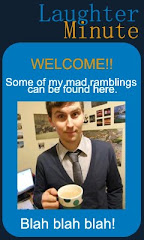Whilst moseying round the Tate Modern, I had two inspiring thoughts, maybe three if you take into account that the Rothko exhibition is rather overpriced for what is essentially squares of colours in big rooms. (Though I did like the black on black ones, where it seems to be one shade, but actually a hidden square with a glaze, that you can only see after looking, really closely for a while.)
The first great wave of excitement came from the moment I decided I quite liked the idea of picturing the photographers rather than the subject matter, I mean I'd end up with the same pictures as everyone else right? Plus there was a slightly pretentious looking professional photographer that I felt it was my duty to annoy a little in a 'subtle' way.


So along the day, I 'collected' a few photos of other people, taking photos.



I think if I decide to really pursue this, it may become a blog in its own right. I missed a terrific shot of two people taking photos in opposite directions, as one had obviously gotten his shot and started to walk away.


This one though is my favourite, coupled with the troubles he was having just moments before;


I think it is great to see that the generation gap is being bridged by technology.
The second thought came from two of the exhibits in the gallery on the fifth floor. One was an artist called Victor Grippo, who had tables as the basis of his artwork, and had quotations written on them, reflecting how tables had become the epitemy of our working and creative lives, sitting at a table represents much more, a great idea.
And a second piece nearby, by Sophie Calle, someone who worked in a hotel, (for only three weeks) and took pictures of the guests things in their rooms, and basically had set up a blog, long before the internet. She was a pioneer of interesting glimpses into people’s lives in the 1980s. a great little project that really made me think about the voyeuristic part in peoples’ lives, and the interest I derive from that little bit of information on faceless people from the 1980s. Her art has this element of self-implemented rules, which is similar to the projects I like to do. More info on this exhibit here.
I wonder whether I should ask these photographers after I’ve taken their picture a bit of information about them. Why they are there etc. Or whether to leave it, but I did really like her text in the panels with the photography.

But to make it of real interest it has to be timeless, like Calle's hotel voyeurism. More pondering will be needed to make this into a fully-fledged project.
The first great wave of excitement came from the moment I decided I quite liked the idea of picturing the photographers rather than the subject matter, I mean I'd end up with the same pictures as everyone else right? Plus there was a slightly pretentious looking professional photographer that I felt it was my duty to annoy a little in a 'subtle' way.


So along the day, I 'collected' a few photos of other people, taking photos.



I think if I decide to really pursue this, it may become a blog in its own right. I missed a terrific shot of two people taking photos in opposite directions, as one had obviously gotten his shot and started to walk away.


This one though is my favourite, coupled with the troubles he was having just moments before;


I think it is great to see that the generation gap is being bridged by technology.
The second thought came from two of the exhibits in the gallery on the fifth floor. One was an artist called Victor Grippo, who had tables as the basis of his artwork, and had quotations written on them, reflecting how tables had become the epitemy of our working and creative lives, sitting at a table represents much more, a great idea.
And a second piece nearby, by Sophie Calle, someone who worked in a hotel, (for only three weeks) and took pictures of the guests things in their rooms, and basically had set up a blog, long before the internet. She was a pioneer of interesting glimpses into people’s lives in the 1980s. a great little project that really made me think about the voyeuristic part in peoples’ lives, and the interest I derive from that little bit of information on faceless people from the 1980s. Her art has this element of self-implemented rules, which is similar to the projects I like to do. More info on this exhibit here.
I wonder whether I should ask these photographers after I’ve taken their picture a bit of information about them. Why they are there etc. Or whether to leave it, but I did really like her text in the panels with the photography.

But to make it of real interest it has to be timeless, like Calle's hotel voyeurism. More pondering will be needed to make this into a fully-fledged project.

Comments (0)
Post a Comment